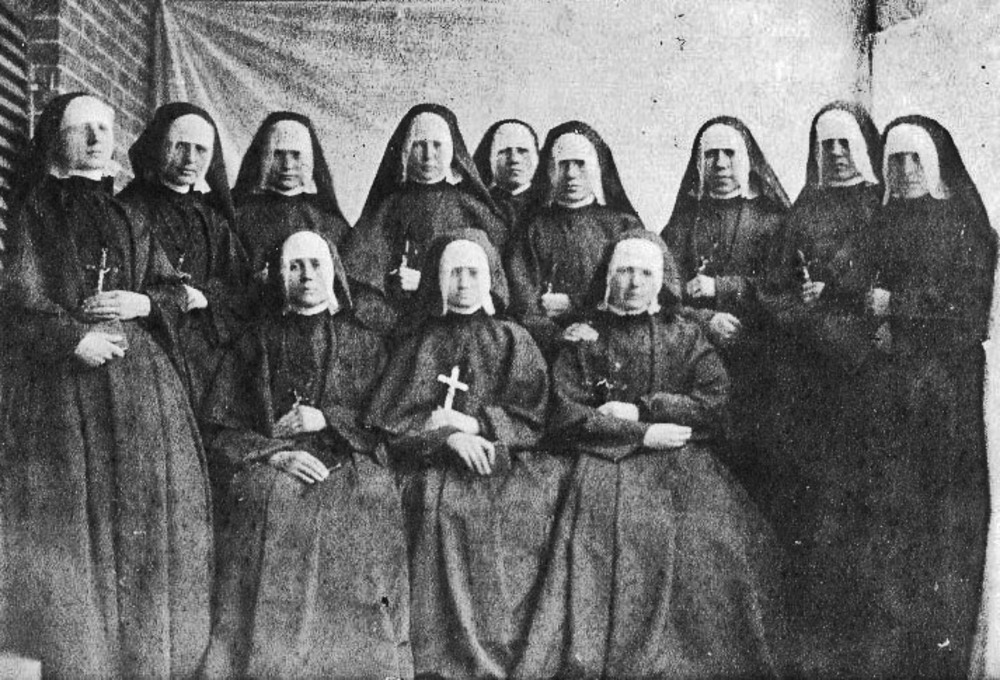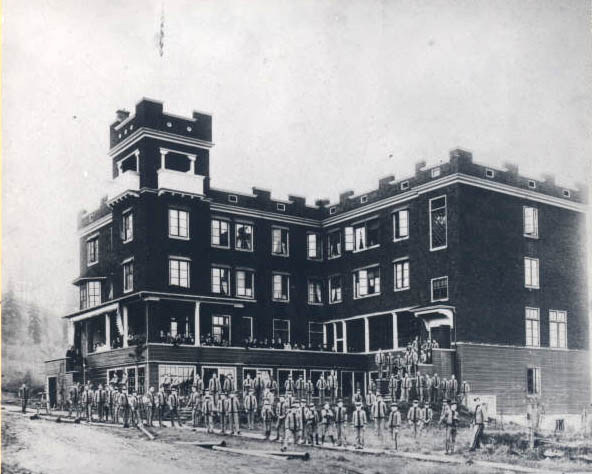On June 1, 1925, in Pierce v. Society of Sisters of the Holy Names of Jesus and Mary (268 U.S. 510), the U.S. Supreme Court declared unconstitutional an Oregon law making public school attendance mandatory. In its ruling, the court upheld the right of private schools to exist and the right of parents to govern their children’s education. “The child is not the mere creature of the state,” the Court held; “those who nurture him and direct his destiny have the right, coupled with the high duty, to recognize and prepare him for additional obligations.”
The Oregon Compulsory Education Bill, which appeared as an initiative on the November 7, 1922, state ballot, compelled children between the ages of eight and sixteen to attend public schools, “with some exceptions based on age, health and access to a parent or private teacher.” Parents or guardians who broke the law would be fined “from five to one hundred dollars” and could be imprisoned for “from two to thirty days.”
The initiative, also known as Measure 6, was inaugurated by the Scottish Rite Masons of Oregon. Proponents included the Ku Klux Klan and the Federation of Patriotic Societies, who believed that the law was necessary to preserve and perpetuate a homogeneous American culture. Opponents argued that the proposed law not only violated constitutionally guaranteed property rights but also posed a threat to religious freedom and the ability of parents to educate their children in accordance with their faith and conscience. Those most opposed were Roman Catholics, the measure’s main target, and Seventh-day Adventists, Episcopalians, and Lutherans—religions that operated private schools.
The Roman Catholic archbishop of Portland, Alexander Christie, founded the Catholic Civic Rights Association of Oregon to combat the initiative and anti-Catholicism generally. In addition, the Oregon episcopacy asked pastors of the 130 Catholic parishes in Oregon to educate voters about the measure and to encourage Catholics to vote.
In the end, the initiative passed by an almost 53 percent margin, with 115,506 votes in favor and 103,685 opposed. Although the new law would not go into effect until September 1, 1926, opponents took their case to federal court. The lead plaintiff, the Sisters of the Holy Names of Jesus and Mary, was joined by the Hill Military Academy, an Episcopalian school in Portland. Taking up the cause of the law’s constitutionality were the Scottish Rite Masons and the new governor, Walter M. Pierce, who had garnered support for his election by tacitly supporting the Compulsory Public Education Bill.
Following the November election, Archbishop Christie approved the creation of the Catholic Truth Society of Oregon to carry out an informational lecture and media campaign to combat the initiative’s intent and the general anti-Catholic climate in the state. In addition, the newly formed National Catholic Welfare Conference provided legal assistance and, with the Knights of Columbus, financial backing, spiritual and moral support, and a national media campaign to oppose the law. The National Council of Churches gave legal support.
The proponents of the law claimed that compelling students to attend public schools was a valid exercise of the state’s police power to control education within its boundaries. Opponents argued that the measure (1) impaired the obligation of a contract between the Sisters and state law, under which their schools were incorporated; (2) constituted the illegal seizure of the Sisters’ property in violation of the due process clause of the Fourteenth Amendment; and (3) violated parental rights to determine their children’s education. On March 31, 1924, the Oregon District Court ruled the law unconstitutional and issued an injunction. Governor Pierce appealed the decision to the U.S. Supreme Court.
In Pierce v. Society of Sisters—supported by amicus curiae briefs from the Episcopal Church, the Seventh-day Adventists, and the American Jewish Committee—the Sisters’ counsel reiterated arguments regarding private school property rights, private school compliance with state educational regulations, and parental rights. Associate Justice James C. McReynolds, writing for a unanimous Supreme Court, upheld the District Court’s adjudication: “The fundamental theory of liberty upon which all governments in this Union repose excludes any general power of the state to standardize its children by forcing them to accept instruction from public teachers only.” The ruling has continued to uphold the constitutionality of private schools to exist and parents’ right to oversee their children’s education.
-
![Founders of the Oregon order, Sisters of the Holy Names of Jesus and Mary, about 1859.]()
Holy Names Sisters, Oregon foundresses, c. 1859.
Founders of the Oregon order, Sisters of the Holy Names of Jesus and Mary, about 1859. Copyright Holy Names Heritage Center
-
![]()
Walter Pierce (1861-1954) in 1923, his first year as Oregon governor.
Courtesy Oreg. Hist. Soc. Research Library, OrHi89968
-
![]()
Hill Military Academy, 1901.
Courtesy Oreg. Hist. Soc. Research Library, Benjamin Wood Hill coll, 017498
Related Entries
-
![Hill Military Academy]()
Hill Military Academy
Hill Military Academy was a prominent military school in Portland, Oreg…
-
![Ku Klux Klan]()
Ku Klux Klan
Fiery crosses and marchers in Ku Klux Klan (KKK) regalia were common si…
-
![Sisters of the Holy Names of Jesus and Mary]()
Sisters of the Holy Names of Jesus and Mary
The Holy Names of Jesus and Mary is a Roman Catholic women's religious …
-
![Walter Pierce (1861-1954)]()
Walter Pierce (1861-1954)
Walter Pierce's long public career extended from the 1890s to the polit…
Related Historical Records
Map This on the Oregon History WayFinder
The Oregon History Wayfinder is an interactive map that identifies significant places, people, and events in Oregon history.
Further Reading
Abrams, Paula. Cross Purposes: Pierce v. Society of Sisters and the Struggle over Compulsory Public Education. Ann Arbor: University of Michigan Press, 2009.
Brandt, Patricia, and Lillian A. Pereyra. Adapting In Eden: Oregon’s Catholic Minority, 1838-1986. Pullman: Washington State University Press, 2002.
Holsinger, M. Paul. "The Oregon School Bill Controversy." Pacific Historical Review 37, no. 3 (August 1968): 327-341.
Jorgenson, Lloyd P. "The Oregon School Law of 1922: Passage and Sequel." Catholic Historical Review 54, no. 3 (1968): 455-466. Accessed March 26, 2021. http://www.jstor.org/stable/25018244.
Mandel, Nicole L. "The Quiet Bigotry of Oregon's Compulsory Public Education Act." Young Historians Conference, 2012. https://pdxscholar.library.pdx.edu/younghistorians/2012/oralpres/6.
Oregon Compulsory Public Education, Measure 6. https://ballotpedia.org/Oregon_Compulsory_Public_Education,_Measure_6_(1922).
Pierce v. Society of the Sisters of the Holy Names of Jesus and Mary, 268 U.S. 510 (1925). Argued March 16 and 17, 1925. Decided June 1, 1925. https://www.csustan.edu/sites/default/files/CJ/JJustice/CaseFiles/Pierce-v-SocietyOfSisters.pdf.
Shelley, Thomas J. "The Oregon School Case and the National Catholic Welfare Conference." Catholic Historical Review 75, no. 3 (July 1989): 439-457.






